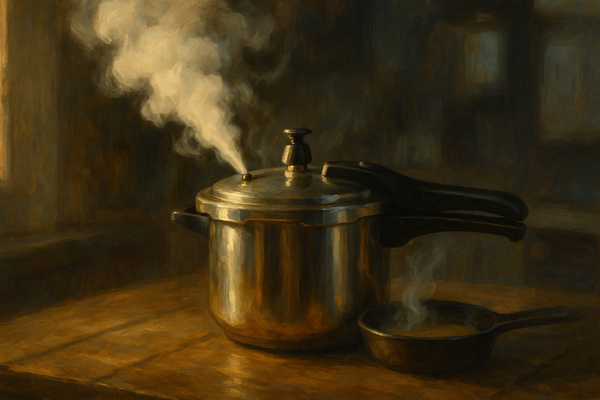
The Hiss Before the Miracle
There’s a moment every pressure cooker owner knows.
That rising hiss. The sound of trapped vapor turning invisible chaos into order.
It’s the most suspenseful minute in cooking — when you’ve sealed the lid, set the heat, and stepped back to trust physics more than instinct.
Pressure cooking is an act of faith.
You can’t see what’s happening. You can’t stir, taste, or adjust. You listen, you wait, and you hope the noise is progress, not warning.
Inside, the laws of nature are doing what hands can’t: turning time into tenderness.
Steam as Force

At its core, a pressure cooker is a physics lesson in disguise.
Boiling water trapped in a sealed vessel builds vapor faster than it can escape.
As pressure rises, so does the boiling point — from 212°F to around 250°F.
That extra heat turns hours of slow simmering into minutes.
Collagen breaks faster. Starches swell quicker. Fibers surrender.
You’re cooking above the limits of the open world.
The math is simple but the feeling isn’t.
Every whistle, every shiver of the lid, reminds you that control here is partial — you hand it over to steam.
The Postwar Panic
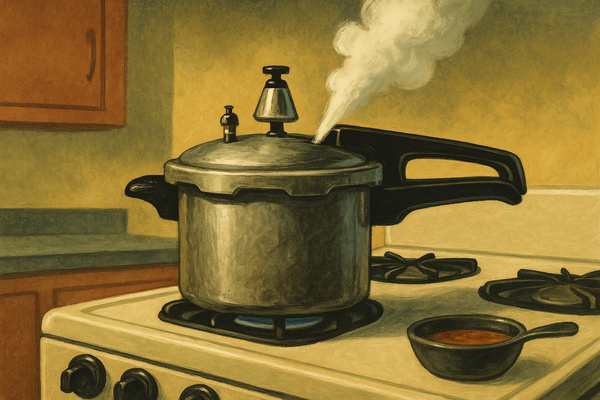
After World War II, the pressure cooker was marketed as a miracle machine.
“Dinner in half the time!” “Tender meat in minutes!”
But miracles have a learning curve.
The early models were loud, unpredictable, and occasionally explosive.
Recipes promised convenience; reality sometimes delivered shrapnel.
Whole generations of home cooks learned to fear that rising whistle — the suspense became part of the folklore.
Pressure cooking became the thriller genre of kitchen work: rewarding if you survived the ending.
Redemption Through Design
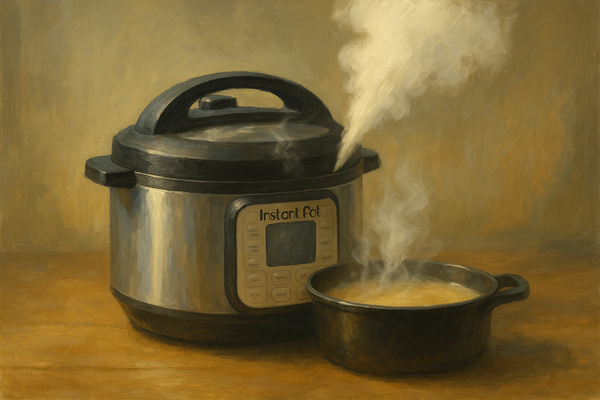
Then came silicone gaskets, safety valves, and digital timers.
The fear quieted. The lid locked itself. The steam behaved.
When the Instant Pot arrived, it didn’t just modernize pressure cooking — it rehabilitated trust.
For decades, cooks had avoided this tool because it demanded surrender.
Now it offered safety and reassurance, without losing its magic trick: collapsing time.
It’s poetic, really — the same force that once scared people became the symbol of modern comfort.
Steam, tamed but not silenced.
The Chemistry of Tenderness
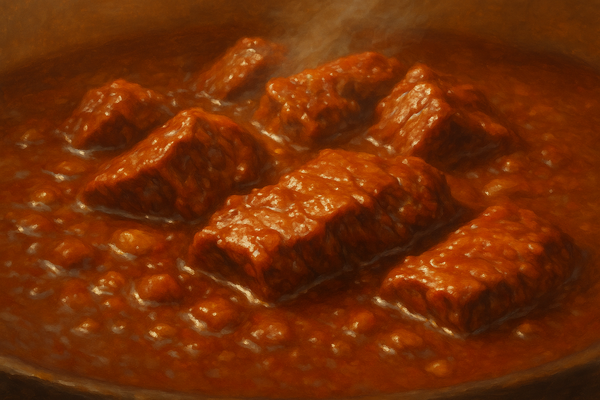
Under pressure, everything softens.
Collagen — the protein that makes meat tough — unwinds faster in steam at 250°F.
In twenty minutes, a stew finds the tenderness that usually takes two hours.
Starches gelatinize, flavors concentrate, and air is replaced with vapor.
Because nothing escapes, every aroma stays.
That’s why pressure-cooked food tastes deeper, almost secretive — like it’s been hiding flavor the whole time.
The alchemy is simple: force compresses time, and time reveals flavor.
Steam as Suspense
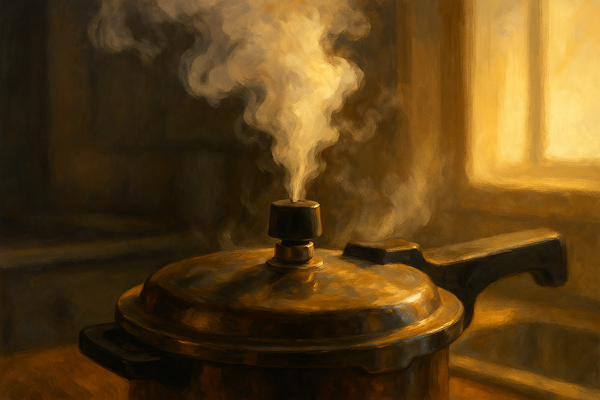
Cooking is full of metaphors, but pressure cooking wears its name like one.
Everything’s sealed, building energy, waiting to be released.
You don’t just cook ingredients; you test your own patience.
The sound of escaping steam is the exhale at the end of tension.
A literal release.
And when you lift the lid, the scent that bursts out is both reward and relief — proof that you trusted the process and won.
That’s what makes it heroic.
Not the speed, but the surrender.
The Psychology of Pressure

Cooking under pressure mirrors how we live now — fast, efficient, a little anxious.
We chase time, contain chaos, promise results.
But inside that sealed pot, the rules flip: patience returns, even if the minutes shrink.
There’s something meditative about setting the lid and stepping away.
It’s trust in mechanical faith — a surrender to process over control.
Maybe that’s why pressure cookers keep coming back.
They don’t just cook fast. They remind us that trust is an ingredient too.
Conclusion: Steam, Speed, and Redemption

The pressure cooker started as a symbol of modern progress, became a cautionary tale, and ended up a redemption story.
It taught generations of cooks to fear, then to trust again.
All it ever did was show us what water could do when it couldn’t run away.
Steam, sealed and harnessed, turned speed into tenderness and fear into faith.
That hiss, that pulse, that release — it’s cooking distilled to its purest form: risk, transformation, and relief.
